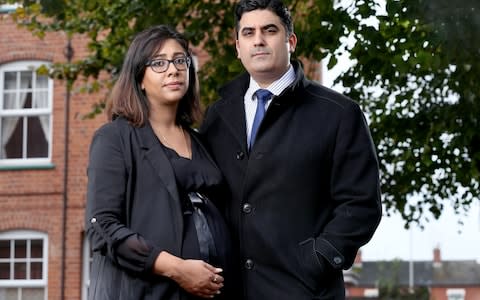Smart motorways can 'confuse' drivers over whether it is safe to pull onto hard shoulder, coroner warns
A coroner has warned how smart motorways can “confuse” motorists who may not know whether a hard shoulder is open or closed to traffic placing lives at risk.
Emma Brown, West Midlands area coroner, has written to both Highways England and the Chief Coroner alerting them about her concerns following an inquest into the death of an eight-year-old boy on the M6.
Dev Naran was killed instantly when the Toyota Yaris car he was in pulled up on the hard shoulder near Castle Bromwich in May last year.
The parked vehicle was hit by a goods vehicle on the southbound carriageway of the M6 between junctions 6 and 5.
The coroner has used her legal powers to warn that other lives could be at risk because Highways Agency staff failed to spot the car, despite numerous CCTV cameras covering the route.

In her letter, seen by The Telegraph, Mrs Brown explains how that section of the M6 can have a hard shoulder both open and then later closed to traffic leading to potential dangers.
“Vehicles stopping in live lanes of a motorway create a serious risk to life due to the speed of the traffic approaching,” she wrote.
It is not known why the boys grandfather who was driving pulled over as there was no emergency, hazards in the road or mechanical fault with the car.
She wrote that despite signs saying the hard shoulder was open to traffic “there is a real risk that drivers seeing a hard shoulder bordered by solid white lines (and who may have used the road when the hard shoulder is not in use as a live lane) may become confused and forget/fail to register that the hard shoulder is operating as a live lane.”

She added that Highways England has “no system of automatic alert” to spot a lone vehicle. Instead, they often have to rely on calls from the police or public to alert them that a stranded motorist is in peril and the lane needs to be closed to traffic.
Meanwhile, Mrs Brown also highlighted how the was a 2.5 mile gap between emergency refuge areas (ERAs) - safe laybys shielded from oncoming traffic, despite the Government company earlier promising to make ERAs no more than 1.5 miles apart.
She also explained how “it is not known how frequently vehicles are stopping on the hard shoulder of the M6 because if there are no calls and no traffic build up the control centre may not become aware.”
Earlier this month it emerged that dozens of motorists are left stranded on live lanes on smart motorways after their cars breakdown or they believe they need to stop.
Research by Highways England revealed that 19,316 vehicles stopped in flowing traffic in 2017 and last year, equivalent to 26 a day.
In the letter she concludes that no one from Highways England giving evidence at last week’s inquest could reassure her that technology had been developed to spot stranded vehicles on smart motorways.
She added how this meant she feared the agency does not regard the issues affecting that stretch of the M6 as “an acute problem … when it should be.”
The family of Dev Naran earlier told the Telegraph that they felt Highways England had not educated the motoring public about how to properly drive on smart motorways.
Meera Naran, Dev’s mother from Leicestershire, warned that more people’s lives could be lost unless there was a national campaign to explain how smart motorways differ from traditional three lane highways with a hard shoulder.

 Yahoo News
Yahoo News 
